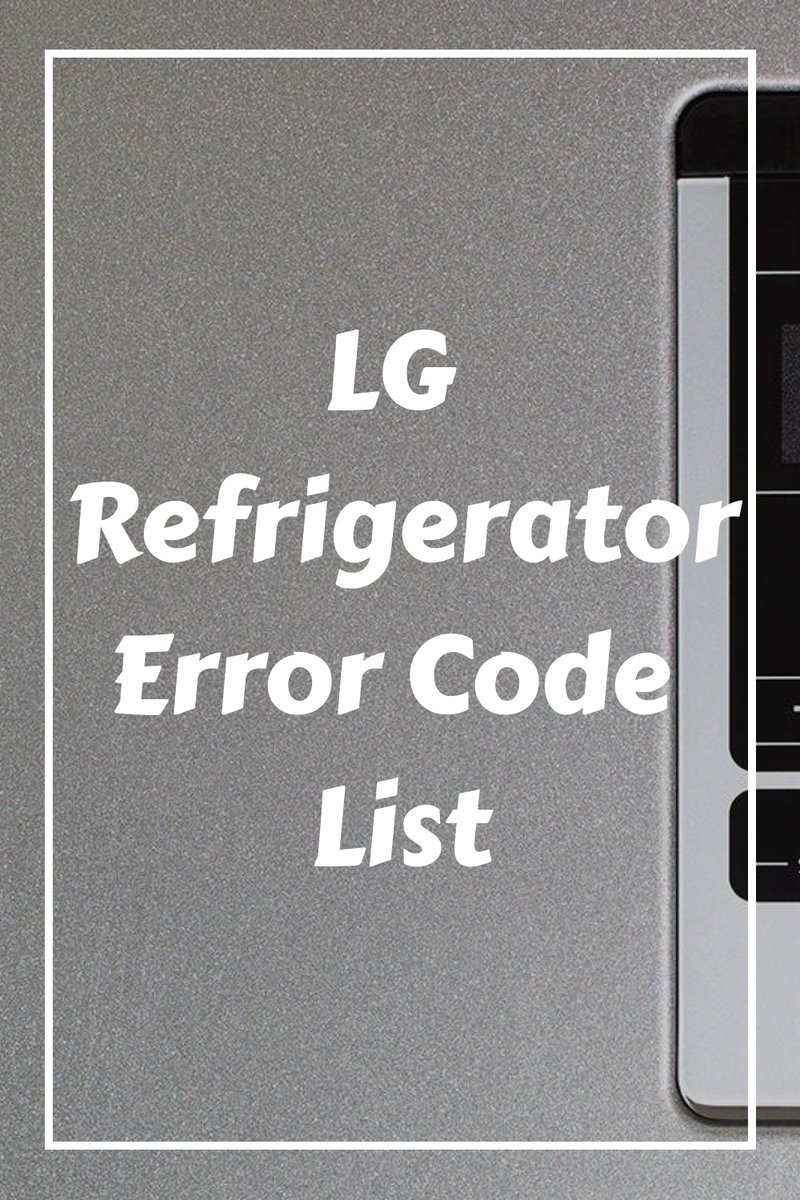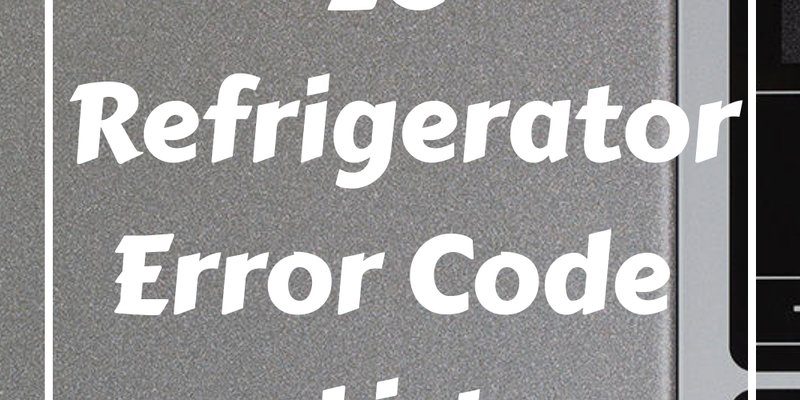
LG refrigerators are known for their technology and efficiency, but like any advanced system, they can encounter hiccups along the way. That’s where these error codes come in handy. They’re like your refrigerator’s way of waving a tiny flag, saying, “Hey, something’s up!” Specifically, Error Code E1 typically relates to issues with the cooling process. Think of it like a traffic warning sign that helps you avoid big detours or breakdowns on your daily commute. Understanding what this means and how to tackle it can save you time, money, and help extend the life of your fridge.
Understanding Error Code E1
To really get to grips with Error Code E1, it helps to think of your refrigerator as your own personal climate control system. Just as you’d adjust the thermostat when you’re too hot or cold, your refrigerator relies on its own cooling mechanisms to keep things just right. When Error Code E1 pops up, it’s often an indication that something isn’t quite right with these systems.
One common cause behind this error is a malfunction in the refrigerator’s evaporator fan motor. The fan’s job is to circulate cold air throughout the interior of your fridge, ensuring an even temperature. Imagine it as the fan in your car that keeps you from sweating on a hot day. If this fan stops working, parts of your fridge might not get cool enough, leading to the error code. Another potential cause is a problem with the thermistor—a sensor that reads the temperature inside your fridge. If the thermistor is faulty, it may send incorrect readings to the refrigerator’s main control board, triggering the E1 code. It’s like trying to bake a cake with a finicky oven that doesn’t maintain a consistent temperature.
In each case, the key takeaway is that the E1 code suggests a problem with the circulation or reading of cold air in your fridge. But don’t worry, there are ways to diagnose and fix these issues, which we’ll cover next.
How to Diagnose the Issue
If you’ve ever taken apart a puzzle, you’ll know that figuring out which piece goes where is half the fun (and challenge!). Similarly, diagnosing what’s causing Error Code E1 involves a bit of investigative work. Start by listening for the sound of the evaporator fan when the door is closed. If you don’t hear it, this might be your culprit.
Next, check the thermistor. You can usually do this by referring to your refrigerator’s user manual, which might involve using a multimeter to test its resistance. This is a bit like playing detective to find out where things went wrong. If the resistance readings are off, it could mean that the sensor needs replacing. In some cases, resetting the refrigerator by unplugging it for a few minutes might clear a minor glitch, much like restarting your computer when it’s acting up.
It’s important not to overlook the defrost system, either. If your fridge is building up frost in the wrong places, it can impede airflow and cause the error code to appear. Checking for visibly blocked vents or excessive ice can help determine if this is part of the problem.
Fixing Error Code E1
Alright, so you’ve identified the possible causes—what now? Fixing the error might be simpler than you think. If the issue is with the evaporator fan motor, replacing it might be necessary. This is akin to swapping out a weak battery in your remote control. It’s a straightforward fix but one that’s critical for performance.
If you suspect the thermistor, a faulty sensor can usually be replaced with a new one ordered from LG or a reliable appliance parts dealer. Remember to handle electrical components with care and turn off power to the refrigerator when working with internal parts. Think of this like turning off your car’s engine before checking the oil—safety first!
For defrost issues, a thorough check and manual defrost might solve the problem. This involves unplugging your fridge and allowing the ice to melt naturally. Afterward, ensure that nothing is blocking the vents and that the defrost timer and heater are functioning properly.
Preventative Tips to Avoid Error Codes
Prevention is the best remedy, as they say. To keep Error Code E1 at bay, regular maintenance of your LG refrigerator can go a long way. Remember to keep the vents inside your fridge unobstructed, allowing for easy airflow. This is similar to making sure your home’s air vents aren’t blocked by furniture—a small detail that makes a big difference.
Clean your refrigerator’s coils regularly. Dusty coils force the fridge to work harder and may lead to issues including error codes. Think of coils as the lungs of your fridge; when they’re clogged, it’s tough for the refrigerator to “breathe” properly.
Finally, stay vigilant for unusual noises or fluctuations in temperature. Addressing these symptoms early can prevent more significant issues from developing. It’s like catching a small leak in your roof before it becomes a waterfall in your living room.
By keeping an eye on these simple maintenance steps, you’ll not only reduce the likelihood of encountering Error Code E1 but also extend the lifespan and efficiency of your refrigerator. Now you’re not just reacting to problems, you’re proactively keeping your kitchen running smoothly.
